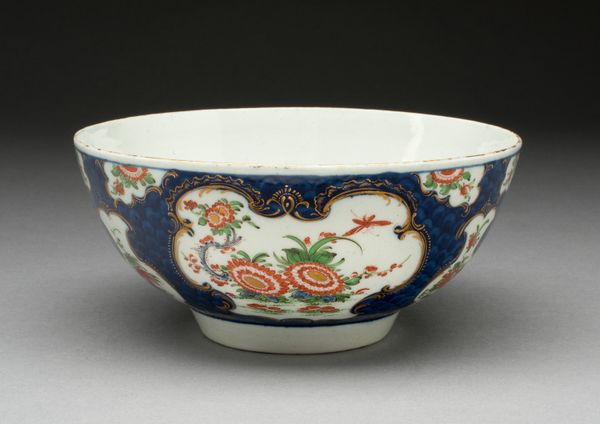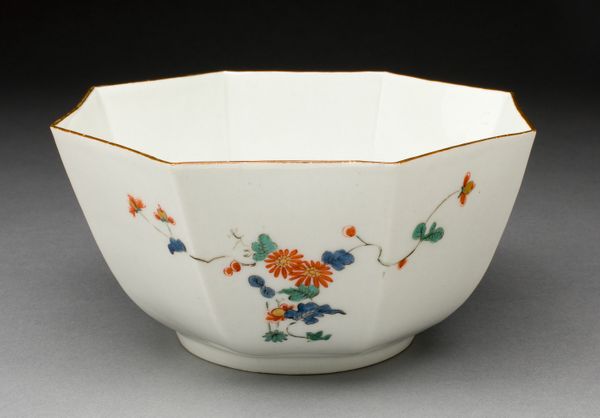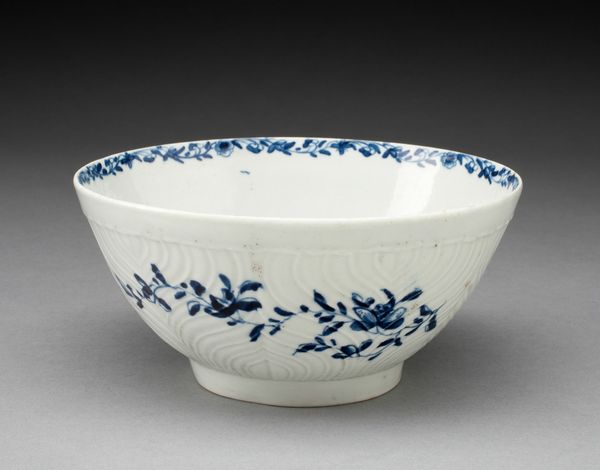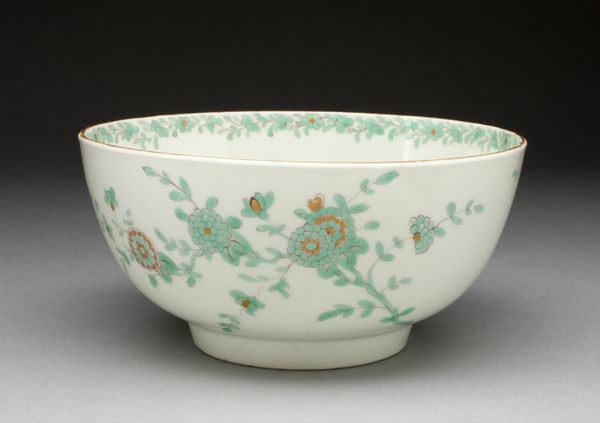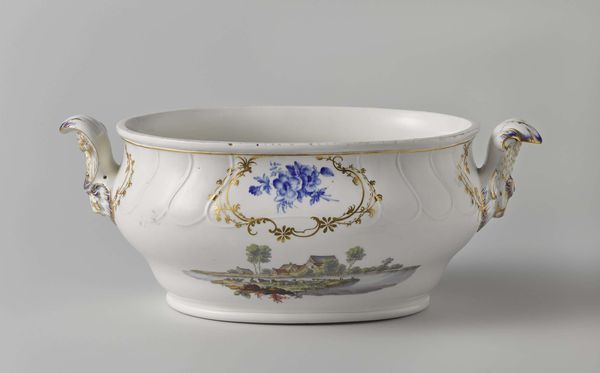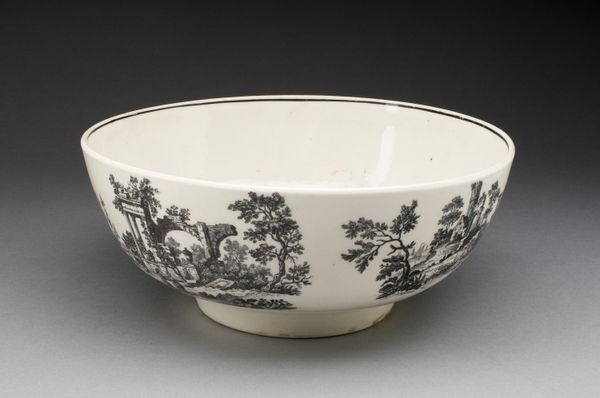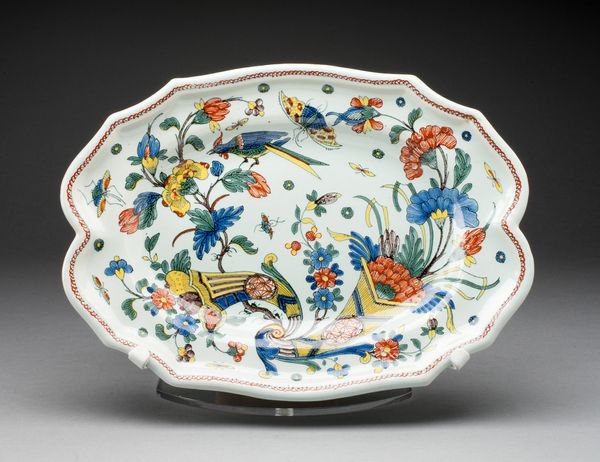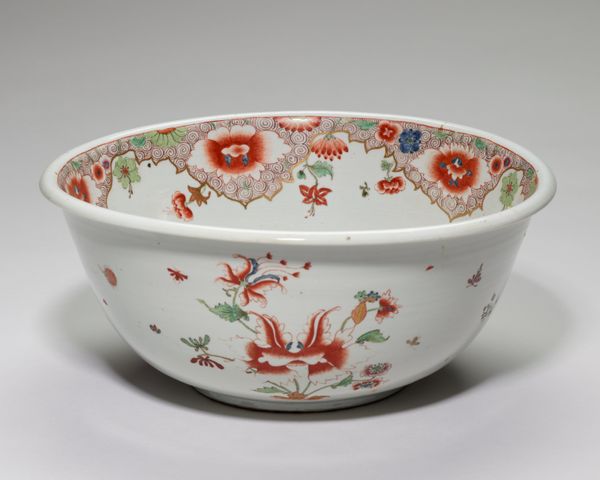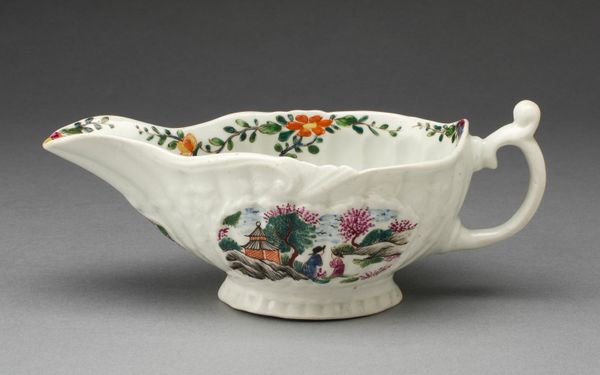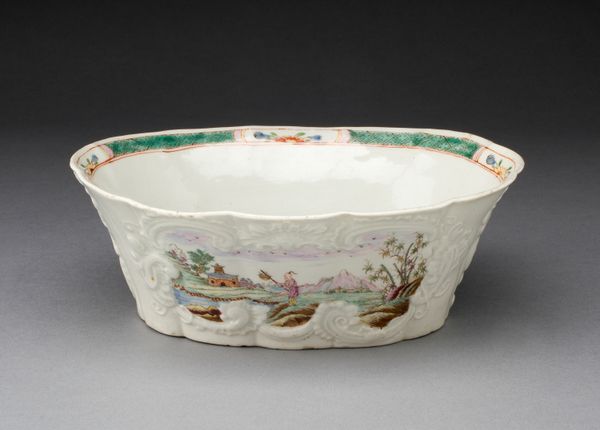
ceramic, porcelain
#
ceramic
#
porcelain
#
ceramic
#
decorative-art
Dimensions: H. 7 cm (2 3/4 in.); diam. 15.2 cm (6 in.)
Copyright: Public Domain
Curator: Look at this, will you? Worcester Royal Porcelain Company’s “Slop Bowl,” circa 1770. A rather delightful piece, wouldn't you agree? Editor: It’s…charming. I immediately notice the Rococo floral pattern—delicate, almost whimsical. The colors are surprisingly vibrant for a piece of this age. It projects elegance. Curator: Elegance yes, but think about function. A slop bowl isn't exactly high art, is it? More about tea rituals and societal norms. Porcelain became quite the status symbol, didn't it? Mass produced yet meticulously decorated… Editor: Precisely! But that tension between mass production and artistic detail is precisely what makes it compelling! The eye dances across the surface, following the undulating gold lines, catching the intricate floral designs. See how the red accents pull you in? The asymmetrical arrangement enhances that visual play. Curator: I'm interested in how such wares shaped social behavior. Tea drinking was hardly a solitary affair, and the material—porcelain—suggests certain levels of industrial activity and class distinctions of the time. How available and expensive was it for the working classes to purchase similar items? Who did it benefit? Editor: The artist, of course, exercises deliberate restraint. Imagine how cluttered and oppressive this could have looked with less negative space. And, the subtle variations in each floral element. The repeated elements are skillfully rendered; however, the asymmetry is not only striking but it prevents visual fatigue from setting in. Curator: But who fired it? Who ground the materials? What about child labor in mines to obtain the ore necessary for the pigments? Was its Rococo design aspirational for the middle class who wished to imitate upper classes or an entirely novel invention with limited appeal? These concerns ground any romantic ideal you might associate with something like this. Editor: A compelling juxtaposition! This little bowl encapsulates those vast economic divides and emerging industries of that period. The materiality and its relation to both production and consumption opens this up, doesn't it? It’s remarkable that so many competing forces converge in something so seemingly simple and ornamental. Curator: I see now, focusing purely on labor obscures other significant aspects! Examining the cultural and commercial context really does enrich the whole reading.
Comments
No comments
Be the first to comment and join the conversation on the ultimate creative platform.

